How to Grow and Care for Alocasia Cucullata (Chinese Taro)
Written by Maggie
Nov 10 2021
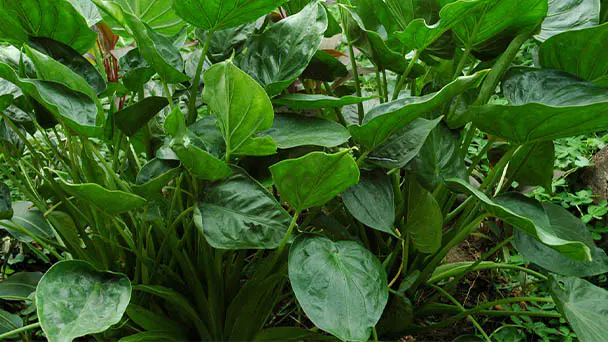
Plants of Alocasia Cucullata (Chinese Taro) are shorter than dripping Cucullata. They are suitable for potted planting with green leaves, upright roots and clustered plants. They are dwarfed by dripping Guanyin. So how to grow the Alocasia Cucullata? What good method to care for Alocasia Cucullata? What do you need to pay attention to when growing Alocasia Cucullata? Please read along with me with questions!
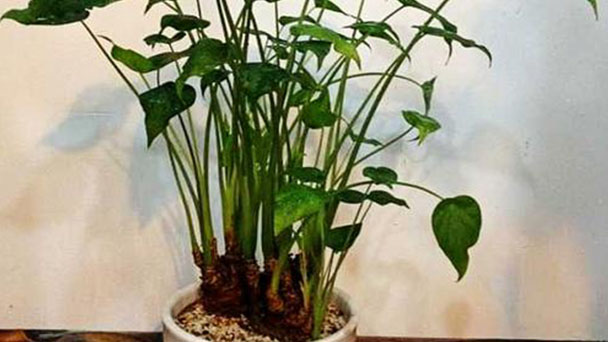
Alocasia Cucullata Quick Info
| Botanical/Scientific Name | Alocasia Cucullata |
| Common Name | Chinese Taro |
| When to Grow/Bloom/Harvest | Grow in the summer and spring seasons/Bloom when they reach maturity in summer |
| Uses | Treat snakebite, abscesses, rheumatism, and arthritis |
| Origin | Tropical and temperate Asia |
| Light Care | Bright, dappled sunlight |
| Soil Care | Loose, well-draining, and slightly loamy |
| Temperature Care | 64 to 72 degrees Fahrenheit (18 to 22 degrees Celsius) |
| Humidity Care | 65% to 80% |
| Watering | Watering once a week is sufficient |
| Pruning Care | Prune older leaf dies off |
| Fertilizer Care | Slow-release fertilizer or a diluted liquid fertilizer |
| Propagation | Rhizomes in the ground |
| Toxic | Highly poisonous to dogs, cats, horses and humans |
| Flower Color | White/Cream |
How to grow Alocasia Cucullata (Basic knowledge) :
- Optimum propagation time: The alocasia cucullata species usually propagate in spring and summer when the temperature is high.
- Optimum growth soil: The Alocasia cucullata has good hydrophobicity, fertile and acidic soil. It can be cultivated with nutrient soil which is made of rotten leaf soil, peat soil, river sand and a little wet cake fertilizer.
- Growth humidity requirements: The Alocasia Cucullata is particularly wet-loving. The growing season requires not only soil moisture but also air humidity not less than 60 {bf}.
- Optimal growth temperature: The growth temperature of Alocasia Cucullata is 20 ~ 30 degrees Celsius, and the lowest temperature can withstand 8 degrees Celsius. In summer, as long as the soil is kept moist, often spray water, shade can still grow normally, and the room temperature in winter should not be less than 5 degrees Celsius.
- Best growth lighting: Alocasia Cucullata is a shade tolerant plant-like semi-shade environment, and it should be placed in both shade and ventilation environments, and can not be exposed to the sun to avoid large areas of plants burning.
Tips for Growing Alocasia Cucullata
Alocasia Cucullata Care in Detail
Alocasia Cucullata Fertilizer
(1) Alocasia Cucullata is more like fertilizer, 3 to October every half-moon should be applied once liquid fertilizer, nitrogen element ratio can be appropriately increased, such as can add a little ferrous sulfate better so that the leaves will grow as large as lotus leaf, bright and beautiful but human. Stop fertilizing when the temperature is below 15 degrees Celsius.
(2) Fertilize Alocasia Cucullata generally 1 to 2 times a month, mainly nitrogen fertilizer, and mixed with phosphorus, potash rarefied liquid fertilizer, Alocasia Cucullata winter dormancy, less water, and stop fertilization.
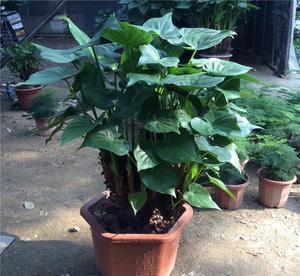
Alocasia Cucullata Watering
(1) Water spraying should be strengthened in summer when the temperature is high to create a relatively cool and humid environment. Alocasia Cucullata should be placed in the indoor air-conditioned hall to ensure the soil is moist and spray water to the leaves from time to time.
(2) If the winter room temperature can not reach 15 degrees, Alocasia Cucullata should be controlled watering, otherwise it’s easy to lead to rotten roots. Under normal circumstances, once a week spray warm water can keep its leaf color thick green.
Trim the main point: if you want to plant indoor Alocasia cucullata small and exquisite, you can simply wait until Alocasia cucullata seedling growth to put one foot, suitable for home, immediately with 2 {bf} multi-effect azole solution spraying Alocasia cucullata plants. Then grow Alocasia cucullata stem leaf 0 cm high, and leaves hypertrophy, ornamental value is very high. Once half a year or so spraying can play a good control effect.
Soil replacement: Changes basins for Alocasia Cucullata once a year in the spring, which can be arranged in early spring or late autumn. The soil can be loosened once a month to keep the basin in a good state of permeability.
Alocasia Cucullata Soil
Alocasia cucullata likes porous, loose and humus rich soil, which will grow more robust. When preparing soil, garden soil, rotten leaf soil and river sand can be mixed and prepared. Rotten leaf soil can improve nutrients and river sand can improve air permeability. In this way, it is not easy to accumulate water and is conducive to growth. We should not only pay attention to Alocasia cucullata soil, but also water frequently, fertilize regularly and ventilate more. In this environment, Alocasia cucullata will grow more vigorously.
Alocasia Cucullata Light
Unlike most green plants that prefer an environment with sufficient light, a semi shade and ventilation environment is more conducive to the growth of Alocasia cucullata. During maintenance, it is only necessary to ensure that the plants receive sufficient scattered light, because Alocasia cucullata is not resistant to strong light, especially in summer. If it is not treated in time, it is easy to burn and wither the leaf surface of taro.
Alocasia Cucullata Temperature
As a tropical plant, Alocasia cucullata is suitable to grow in a warm environment. The most suitable growth temperature is 20-25 ℃. It has poor cold resistance and is not resistant to frost and severe cold. Generally, in winter, we should pay attention to timely move Alocasia cucullata into the greenhouse to avoid the temperature lower than 5 ℃, otherwise it will be prone to frostbite and plant death.
Alocasia Cucullata Humidity
Alocasia cucullata is a perennial tropical region. This kind of plant likes a warm, humid, semi-cloudy and ventilated growth environment. It is not resistant to severe cold, ponding and strong light. We should also pay attention to maintaining a good environment when cultivating Alocasia cucullata.
Alocasia Cucullata Pruning
We can prune Alocasia Cucullata's leaves during the growth period. If it is found that the yellow leaves are cut off in time, some diseased leaves and insect leaves should also be cut off after they are found. Before germination in spring, we can cut off the branches that grow too long at the top of Alocasia cucullata, control the height and promote the germination of new branches and leaves. In the dormancy period, the useless branches are cut off first, and then the branches and leaves are thinly cut to shape the plant. Alocasia cucullata shall change pots in spring and autumn. When changing pots, Alocasia cucullata pruning shall be carried out properly to retain healthy roots.
Alocasia Cucullata Repotting
Alcoasia cucullata repotting is generally carried out in spring or autumn every year. Because the plants are relatively large, a larger flowerpot can be replaced when changing pots. The soil can be mixed with rotten leaf soil and garden soil, and an appropriate amount of base fertilizer is added. After changing the basin, place it in a cool and ventilated environment to slow the basin for a period of time.
We give alcoasia cucullata repotting in spring or autumn every year. At this time, the temperature is more appropriate. After changing pots, it is more conducive to plant recovery. Changing pots is generally carried out after 1-2 years of breeding, so that the sharp tail taro can continue to grow healthily.
If the temperature is appropriate, Alocasia cucullata repotting is more conducive to plant recovery. Changing pots is generally carried out after 1-2 years of breeding, so that the sharp tail taro can continue to grow healthily.
After the completion of Alocasia cucullata repotting, we will temporarily place Alocasia cucullata in a cool and ventilated place to wait for the basin. During this period, try to avoid direct sunlight, and keep the basin soil moist. After Alocasia cucullata recovers its growth, you can start daily maintenance and management.
Alocasia Cucullata Propagation
Alocasia Cucullata Division Propagation
Plant division is often used for Alocasia Cucullata propagation. Generally, when the temperature is high in spring and summer every year, the underground tuber tillering plants growing thickly will be divided along the tuber separation place, so that each part has 2 ~ 3 plants, and then planted in the basin separately. At the same time, it is advisable to place the Alocasia Cucullata in a dank environment, keep the soil in the pot moist often, and pay attention to leaf spray, so as to facilitate the recovery of new plants. Also it can be in the spring before the new buds pumping long underground tubers dug, tubers cut segment separation, with wood ash or sulfur powder to the wound disinfection and preservative, a little dry with water coating, or placed in the ventilation and drainage of loose soil, so that it grows out of the unstable roots, long new buds. Avoid the substrate being too wet, so as to avoid tuber rot. The Alocasia Cucullata may also be propagated by sowing, but seeds are not readily available.
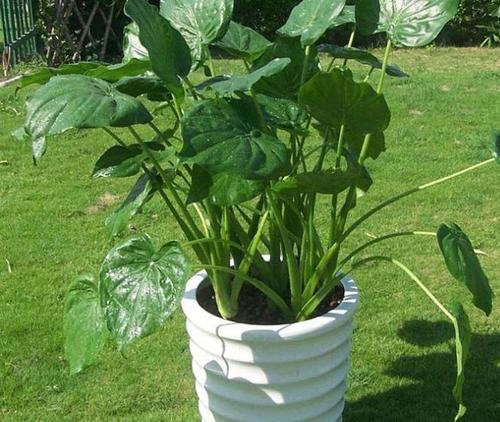
Alocasia Cucullata Cutting Propagation
Alocasia cucullata cutting propagation is also a common propagation method, which is generally carried out in spring. Select a section of healthy branches about 10cm as cuttings. We can cut them in pot soil or sand bed and maintain them patiently for a period of time. After taking root successfully, we can transplant them for maintenance.
Alocasia Cucullata Sowing Propagation
Alocasia cucullata sowing propagation can adopt the method of collecting and sowing at any time. After the seeds are harvested, they can be planted in fertile open fields. If potted taro is cultivated, it should be sown in a shallow mud basin. Appropriate humidity should be maintained after sowing, and the temperature should be about 25 ℃. We should wait patiently for germination and plant after 3-4 real leaves grow.
Alocasia Cucullata Benefits
Alocasia cucullata is a woody plant. The shape of the underground stem is a similar egg surface, with many small bulbs and plush chemical fibers. The taro will bloom for eight months. Alocasia cucullata can also be taken.
Alocasia Cucullata Pest Control
1. Leaf spot: Leaf spot can be sprayed on the leaf surface with chlorothalonil or carbendazim 800 times liquid, 2 ~ 3 times continuously, every 7 days.
2. Anthrax: Anthracnose should be used 75 {bf} of methyl topoxine 500 times liquid to the leaf spray, every 7 days once, continuous 2 ~ 3 times, can be basically controlled.
3. Blight: You can cut off the diseased part of Alocasia Cucullata with a knife. The boundary between the diseased part and the non-diseased part is very clear, and it can be broken off with your hand. If the diseased part is less than one third of the stem, you can apply a layer of chlorothalonil solution to the undiseased part and keep it dry. Apply it again every ten days, and it will be cured after 20 days.
4. Starscream: Red spider is born in leaf back commonly. It not only sucks the nutrition of Alocasia Cucullata leaves, still spread all sorts of virus, affect the growth of the plant seriously. We must check often, once discovered, treated immediately. It can be treated with drugs such as mite cleaning, acaroid cleaning and imidacloprid.
Tips for growing Alocasia Cucullata:
1. Put Alocasia Cucullata under warm, moist conditions and sufficient soil moisture, water will drip down from the tip or edge of the leaf. If the air humidity is too low, the water will immediately evaporate, so the general water droplets are more in the morning, known as the "spit" phenomenon.
2. Alocasia Cucullata prefers warm and humid environments with a little shade, so it is advisable to put the Alocasia Cucullata in the shade of the balcony or courtyard in the growing season. In summer, avoid direct sunlight, often keep the basin soil moist, often spray water, shade can still grow normally. Alocasia Cucullata flowers like sun, otherwise the Flame bud green, affect the quality.
3. Planting Alocasia Cucullata should ensure 3-5 hours of light every day, otherwise the petiole of the Alocasia Cucullata will elongate, affecting its ornamental value.
4, Alocasia Cucullata cold resistance is not strong. In mid-October, move it into the greenhouse breeding. In summer it needs to be in a shade case, often spray cooling moisture.
5, Alocasia Cucullata prefers moist, fertile soil, that is, often said "big fertilizer and water", the growth period should be watered more. But not excessive, suitable dry wet, no water in the soil, otherwise the Alocasia Cucullata tuber will rot.
6. The Alocasia Cucullata is a very common domesticated green pot, but because it is a tropical plant, it generally does not bloom in the north. But if the temperature at home and other conditions are right, it will also bloom.
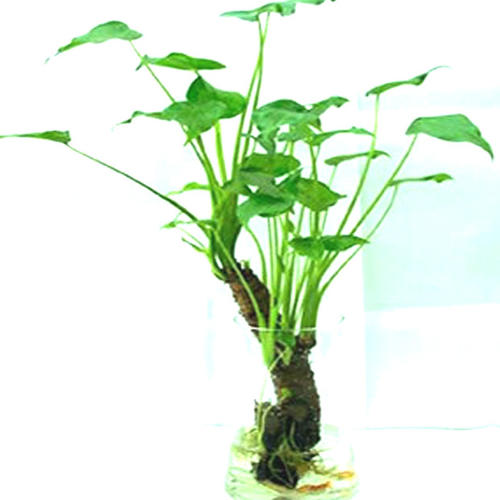
7. Normal aging. Alocasia Cucullata is relatively easy to maintain. If properly maintained plants lower leaves also appear yellow, that half is the normal aging of the leaves, just cut off the aging of the yellow leaves.
8. Improper watering. Over Watering the Alocasia Cucullata causes the root system to be deprived of oxygen, causing discomfort, but symptoms mainly appear on the leaves, such as yellowing of the leaves. So watering should be to dry thoroughly irrigate it is good, do not let basin soil get wet, rather dry. Do not water it too wet.
9. Insufficient humidity. Alocasia Cucullata prefers a warm and humid environment. Indoor humidity should be maintained between 70 ~ 85 {bf}, which is conducive to the healthy growth of plants. If humidity is low, leaves will appear yellow leaves, coke edges and shrinkage.
10. The cultivation of Alocasia Cucullata can be made of leaf rot soil, peat soil and cake fertilizer mixed into nutrient soil for cultivation. In addition to soil cultivation, the Alocasia Cucullata can also be used for water cultivation.
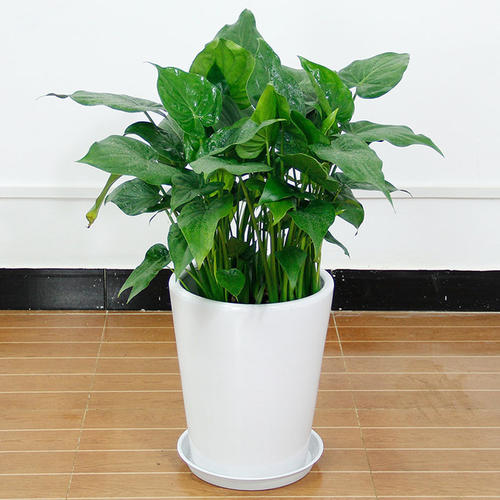
Latest Updated
- Benefits of Bugleweed - 7 Science-backed Health Benefits
- Bugleweed Dangers & Side Effects - Is It Poisonous?
- How to Plant Evergreen Trees - What You Should Know
- When to Plant Evergreens - Grow Guide for Evergreen Trees
- 12 Wonderful Evergreen Shrubs for Your Garden
- 12 Popular Evergreen Plants with Pictures for Beginners
- When And How To Prune A Lilac Bush Like a Pro
- How to Grow & Care for Lilac Vine (Hardenbergia Violacea)
- Japanese Lilac Tree (Syringa Reticulata) Care & Propagation Guide
- Shumard Oak Pros and Cons - What to Know
Popular Articles
- Winter maintenance of Antirrhinum Majus
- How to Grow Terminalia Mantaly Tree
- How to Grow and Care for Crossostephium Chinense
- How to grow Antirrhinum Majus in spring
- Peristeria Elata (Dove Orchid) Profile: Info & Care Guide
- Underwatered Snake Plant (Sansevieria Trifasciata) - Signs And How To Fix
- How to Care for Brazilian Jasmine Plant (Mandevilla Sanderi)
- How to Grow & Care for Graptopetalum Purple Delight in Summer
- Rosa Chinensis (China Rose): Plant Growing & Care Tips
- How to Care for Baby Sun Rose (Aptenia Cordifolia)